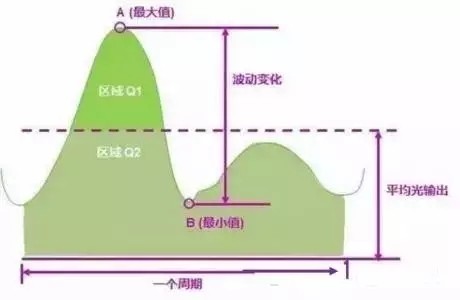
Privacy statement: Your privacy is very important to Us. Our company promises not to disclose your personal information to any external company with out your explicit permission.

The harm of flash to the human eye is often beyond our imagination. In order to reduce the damage caused by stroboscopic light, China's corresponding national standard has stipulated LED strobe. How? Let's look down?
LED strobe standard
Naomi Millier, senior scientist and lighting designer at the PNNL (Pacific Northwest National Laboratory) senior lighting group, said, "The lighting industry is concerned with stroboscopic range that can cause nervous system problems and affect job performance." If it is not well controlled then it will cause the above problem. So what is this strobe range?
Although IEEE PAR1789 "Potential Health Effects of LED Lighting Blinking" gives the "undetectable" and "low risk" limits of fluctuation depth and stroboscopic index, and defines the depth of fluctuation (fluctuation depth = (AB) / (A + B) ) × 100%) and stroboscopic index (strobe index = Q1/(Q1+Q2)), but it is difficult to achieve in practical applications, mainly because it increases the cost and volume of the LED light source.
The concept of wave depth is the difference between the maximum (A) and minimum (B) brightness divided by the sum of the maximum and minimum brightness, ie the Michelson contrast.
The stroboscopic index is defined as the area above the average light output line for one cycle divided by the total area of the light output curve. That is, the ratio of the area of the Q1 region to the sum of the areas of the Q1 and Q2 regions.
At present, the new GB/T 31831-2015 "Technical Requirements for LED Indoor Lighting Applications" standard adopts this definition and limits. The new standard will be implemented on January 1, 2016.

The above picture can help us understand the meaning of wave depth and stroboscopic index.

The relationship between the fluctuation depth of the stroboscopic frequency and the frequency is shown in Fig. 2. The unaffected area in Fig. 2 is indicated by green, and the low risk area is indicated by orange. The upper limit of the low-risk area is the fluctuation depth line, which is less than 0.08 times the flicker frequency, which is equivalent to 2.5 times the unaffected edge.
LED strobe test method
Check and discriminate whether the LED light source and the luminaire have strobe? The simple method is to turn on the camera's camera function to observe the LED light source at a close distance. If the light source has obvious black stripe scrolling or light and dark changes on the screen, you can conclude that there is stroboscopic.
For the characteristics of LED strobe, the following conditions must be met when performing stroboscopic measurement:
1) The photoelectric conversion detector used must have a fast response speed and can be quickly sampled;
2) The detector must be able to simulate the curve of the human eye's light, that is, the curve of the visual function, which can simultaneously measure the illuminance or brightness;
3) With software calculation function.
According to the above requirements, the current instrument for measuring stroboscopic light is a photometer. The ambient temperature during the test should be controlled between 20 and 30 °C. The photometer price is cheaper than the spectrometer, but it can only measure one wavelength at a time, but it is enough in the strobe. Because in the visible light band, for the same luminaire, the change in light intensity is synchronous and proportional. In a switching cycle, we only need to measure the luminous flux curve of a specific wavelength, calculate the fluctuation depth according to the peak and valley values, and calculate the average luminous flux (using the integral method to obtain the area S of one cycle in Figure 1) The average luminous flux is obtained by dividing the period length T, and then integrating the Q1 region, Q2 = S - Q1, and the stroboscopic index can be calculated from Q1 and Q2.
In addition, there are currently a variety of stroboscopes dedicated to testing the strobe of the light source. The specific data of the stroboscopic parameters can be read directly from the instrument, which can be roughly divided into three types: handheld (such as SFIM-300 spectrum). The flashing illuminometer), the desktop touch screen can be directly displayed (such as the LFA-2000 source strobe tester), and the desktop needs to be connected to the PC end plus software test (such as PM2000).
On April 22, network activity named "FAST 2015 -! OPEN DAY" was launched by a brand LED high-power outdoor lighting manufacturer- Shenzhen Lead Optoelectronics Technology Co., Ltd.(Chinese name is...
Recently, the world's leading watch brand Hublot and brand ambassador, legendary track and field athlete Usain Bolt hand in hand into Kyoto, the ancient capital of Japan, with passion to ignite...
This article is reproduced, does not represent the world position of million table.
After two years of breakthrough in the laboratory's light efficiency of 200 lm/W, Cree has finally produced the series of LED chips with 200 lumens per watt at the end of 2012, and officially...
Email to this supplier

Privacy statement: Your privacy is very important to Us. Our company promises not to disclose your personal information to any external company with out your explicit permission.

Fill in more information so that we can get in touch with you faster
Privacy statement: Your privacy is very important to Us. Our company promises not to disclose your personal information to any external company with out your explicit permission.